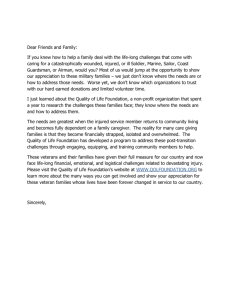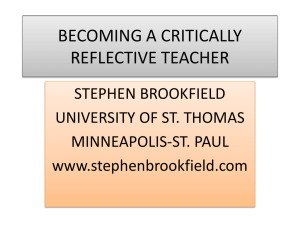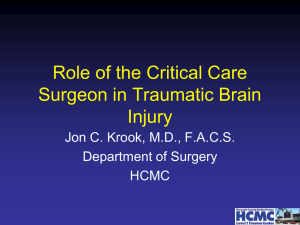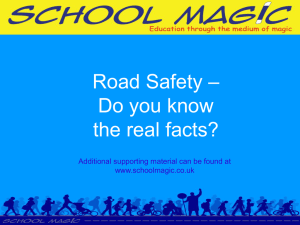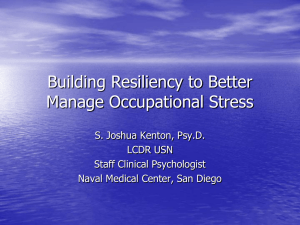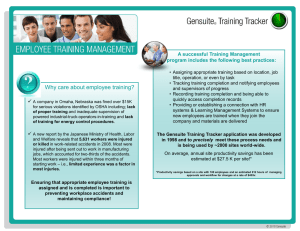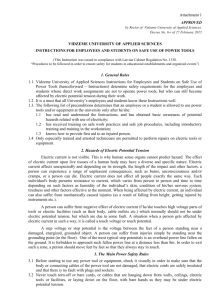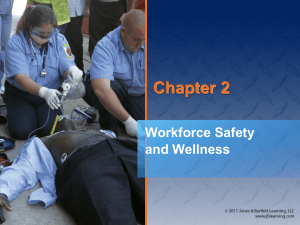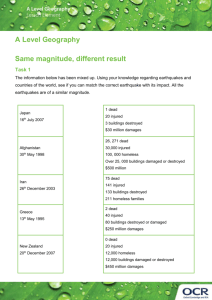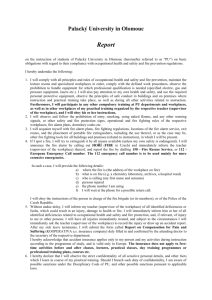Document
advertisement
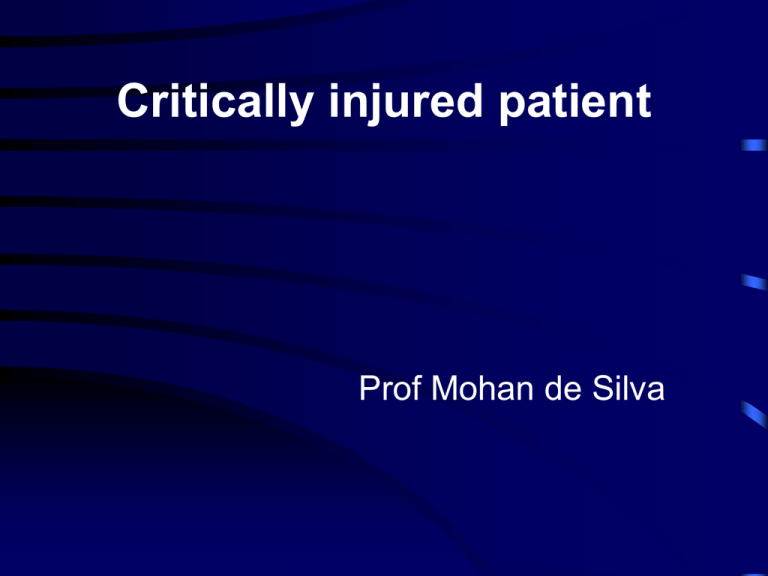
Critically injured patient Prof Mohan de Silva Essential words to remember • TRIMODAL distribution of deaths • ATLS • Primary survey • Secondary survey The Critically Injured Trauma commonest cause of hospital admissions in Sri Lanka since 1995 commonest cause of death below the age of 40 in many countries The critically injured Majority died due to inadequate treatment Initial treatment determines the outcome Early intervention is essential GOLDEN HOUR OF TRAUMA TRIMODAL DISTRIBUTION OF DEATHS • Immediate • 1st few hours • Few days after admission Conventional approach History Examination Investigations Diagnosis Treatment How it all started Another accident ……….. New approach… A T L S Initial assessment ( History, Examination ) Resuscitation ( Treatment ) WILL BEGIN SIMALTANEOUSLY Recognize and treat the most life threatening injury first TRAUMA KILLS ACCORDING TO A SEQUENCE ! Acute airway obstruction - The quickest killer Inadequate breathing Hypovolaemia Expanding intra cranial haematoma Hypoxia and Hypovolaemia are the main killers Hypoxia kills before hypovolaemia PRIMARY SURVEY SECONDARY SURVEY Initial assessment and resuscitation Primary survey A ir way with cervical spine control B reathing C irculation D isability (Neurological ) E xposure F oleys catheter Airway obstruction recognition and treatment Identify – SPEAK TO THE PATIENT establish OXYGEN protect OXYGEN maintain OXYGEN 10 L / minute Immobilisation of the C spine sand bag collar tape B reathing Inspection - wall movements,ext. injuries etc Palpation - cripitus percussion Auscultation - breath sounds absent - hyperesonence or stony dullness RESPIRATORY RATE Circulation All critically injured patients are in hypovolaemic shock Action PULSE RATE , B P 2 Big drips to Two big veins 2 L of N Saline fast in Blood cross matching D isability (Neurological ) A V P U Glasgow coma score Expose the patient Where is the scissor ! Secondary survey Pulse - BP – RR -Temperature Systematic examination from head to toe LOG ROLL Finger to all orifices Minor injuries History AMPLE A llergies M edications P ast illnesses L ast meal E vents leading to the injury Outcome •? •? •? TAKE HOME MESSAGE What is the first thing you do when you get a critically injured ? What is the quickest killer of the injured? What is trimodal distribution of deaths? What is the difference between conventional and ATLS approach What do you do in Primary and secondary surveys?
